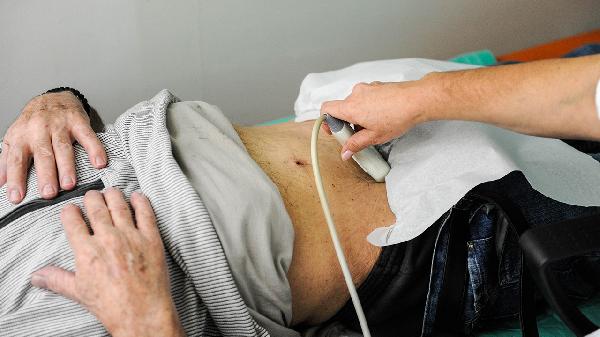What are the symptoms of HIV infection? HIV itself does not cause any disease, but when the immune system is destroyed by HIV, the body loses the ability to replicate immune cells due to its low resistance, leading to infection by other diseases. Before developing into AIDS patients, there may be no symptoms. After developing into patients, due to different opportunistic pathogens, the clinical manifestations of patients are varied. After AIDS infects the human body, some cases produce symptoms similar to mononucleosis; some become virus carriers with no clinical symptoms; some develop into classic AIDS after a latent period of 6 months to 4 years or longer.

The 4 stages of HIV infection
According to clinical progression and prognostic indicators, HIV infection is divided into 4 stages: acute HIV infection, asymptomatic HIV infection, pre-AIDS, and AIDS.
(1) Acute HIV infection
The symptoms of acute HIV infection are non-specific. Within 1 to 6 weeks of HIV infection, 53% to 93% of infected individuals develop acute symptoms, mainly including fever, fatigue, myalgia, anorexia, nausea, diarrhea, and non-exudative pharyngitis. Some patients experience headache, photophobia, and meningeal irritation. One-fourth to one-half of infected individuals develop a rash on the trunk, which may be maculopapular, roseola, or urticaria. A few infected individuals may develop encephalitis, peripheral neuritis, and acute polyradiculoneuritis. Enlarged lymph nodes in the neck, armpit, and occipital regions, occasional hepatosplenomegaly, and individual cases of oral or esophageal ulcers or candidiasis. Symptoms usually disappear within 1 month. After symptoms appear, HIV antibodies gradually become positive within 2 to 4 weeks. The time from infection to seroconversion is called the "window period," generally 4 to 8 weeks.
Window period, the time required for a patient to form antibodies after HIV infection. Generally, it takes about 45 days to produce serum antibodies after HIV-1 infection, and the window period is also infectious. WR0 indicates exposure to HIV through different transmission routes, and understanding this period helps in early diagnosis and treatment. WR1 has reliable experimental evidence of HIV infection. Although most patients have no clinical manifestations, a few may show symptoms similar to mononucleosis, such as fatigue, fever, lymphadenopathy, and rash. WR2 manifests as progressive generalized lymphadenopathy, which is the first symptom of immunodeficiency in most patients, lasting about 3 to 5 years. WR3 manifests as T helper or inducer cells persistently below 400 ×106/L, with reduced immune function, lasting about 18 months. WR4 has direct evidence of cellular immunodeficiency, with no response to three of the four delayed-type hypersensitivity skin tests. WR5 manifests as no response to all skin-type hypersensitivity tests, with obvious symptoms of cellular immunodeficiency, such as thrush, lasting about 1 to 2 years. WR6 manifests as chronic or disseminated conditional infections other than skin and mucous membranes, entering classic AIDS, with most patients dying within 2 years.
(2) Asymptomatic HIV infection
The characteristic of asymptomatic HIV infection is the absence of symptoms, but a few infected individuals have persistent generalized lymphadenopathy, often symmetrical, mainly in the neck, occipital, and armpit regions, with lymph node diameter >1cm, no spontaneous pain, and no tenderness. The viral load of infected individuals remains stable at a low level, and CD4 cell counts progressively decrease. The asymptomatic infection period in adults is generally 7 to 10 years, during which HIV antibodies are positive.
(3) Pre-AIDS
Infected individuals develop persistent or intermittent systemic symptoms and "mild" opportunistic infections, manifesting as AIDS-related complex (ARC). ARC refers to a series of related symptoms (such as lymphadenopathy, night sweats, fever, diarrhea, etc.) in HIV-positive patients, but the severity is not enough to diagnose AIDS. At this time, the plasma viral load of infected individuals begins to rise, and the rate of CD4 cell count reduction significantly accelerates, often falling below 200/μl.
(4) AIDS
In the AIDS stage, the HIV viral load in the blood is greater than tens of thousands/ml, CD4 cells are significantly reduced, and cellular immune function is severely deficient, leading to fatal opportunistic infections and malignancies, as well as wasting syndrome and dementia.
① Opportunistic infections: Bacterial infections include Gram-positive or negative bacteria, Mycobacterium tuberculosis, and Mycobacterium avium-intracellulare infections. Viral infections include herpes simplex virus, varicella-zoster virus, EB virus, cytomegalovirus, and hepatitis virus infections. Fungal infections include Pneumocystis carinii, Candida, Cryptococcus, and Histoplasma. Protozoan infections include Toxoplasma and Cryptosporidium. Pneumocystis carinii pneumonia is one of the common causes of death in AIDS patients.
② Malignancies: Including Kaposi's sarcoma, lymphoma, invasive cervical cancer, etc.
③ Dementia and wasting syndrome, etc.
























